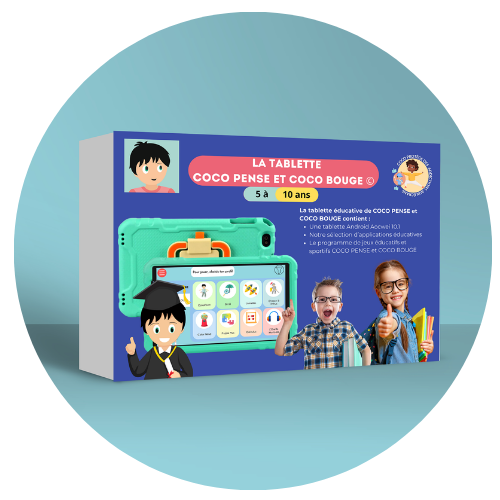Autism Spectrum Disorder (ASD) presents unique challenges in communication, making speech therapy an essential component of intervention for individuals on the spectrum. As we navigate the complexities of autism, we recognize that each person has distinct needs and abilities, which can significantly influence their communication skills. Speech therapy aims to enhance these skills, providing individuals with the tools they need to express themselves effectively and engage with the world around them.
Through tailored approaches, speech therapists work diligently to foster language development, improve social communication, and address any associated challenges that may arise due to autism. In our journey through autism speech therapy, we often encounter various techniques and methodologies designed to support individuals in their communication endeavors. These may include traditional face-to-face therapy sessions, where therapists employ a range of strategies to facilitate language acquisition and social interaction.
However, as we delve deeper into the realm of autism therapy, we find that the integration of technology has revolutionized the way we approach speech therapy. By harnessing innovative tools and resources, we can create more engaging and effective therapeutic experiences that cater to the diverse needs of individuals with autism.
The Role of Technology in Autism Speech Therapy
As we explore the role of technology in autism speech therapy, it becomes evident that it serves as a powerful ally in enhancing communication skills. Technology offers a plethora of resources that can be tailored to meet the specific needs of individuals with autism. From interactive software to engaging applications, these tools provide opportunities for practice and reinforcement in a way that is often more appealing than traditional methods.
By incorporating technology into our speech therapy sessions, we can create a dynamic learning environment that encourages participation and motivation. Moreover, technology allows us to track progress more effectively. With the ability to collect data on an individual’s performance over time, we can identify patterns and adjust our therapeutic approaches accordingly.
This data-driven approach not only enhances our understanding of each individual’s unique communication journey but also empowers us to set realistic goals and celebrate achievements along the way. As we embrace technology in autism speech therapy, we find ourselves equipped with a wealth of resources that can significantly improve outcomes for those we support.
Augmentative and Alternative Communication (AAC) Devices

Augmentative and Alternative Communication (AAC) devices are essential tools that support individuals with autism who face challenges in verbal communication. These devices provide a range of options, from basic picture boards to advanced speech-generating devices, enabling users to express their thoughts, needs, and emotions effectively. Through the use of AAC, individuals with autism can experience a significant improvement in their ability to communicate, enhancing their quality of life and promoting social interaction.
1. Customizable to Individual Needs
One of the most notable advantages of AAC devices is their ability to be customized to suit the specific needs of each individual. Whether it is a simple communication board with pictures or a more advanced device that generates speech, AAC solutions can be tailored to match the user’s level of understanding and communication abilities.
- Personalization: AAC devices can incorporate the user’s preferences, allowing them to select symbols, images, or words that resonate with their daily life and routines.
- Adjustability: The complexity of the devices can be adjusted as the individual progresses, providing a seamless way to increase communication skills over time.
2. Enhancing Independence and Self-Expression
For individuals with autism who struggle with verbal expression, AAC devices can provide a crucial outlet for communication. These tools enable users to express their thoughts, desires, and emotions in a way that feels comfortable to them.
- Increased Control: With AAC devices, individuals gain greater control over their communication, reducing frustration and enhancing their ability to engage with the world around them.
- Empowerment: The ability to communicate through AAC fosters a sense of independence and self-expression, encouraging individuals to share their feelings, requests, and opinions.
3. Improving Social Interaction
One of the key benefits of AAC devices is the improvement in social interactions. By providing an alternative method of communication, these devices help individuals with autism engage more meaningfully with others, whether in family settings, at school, or in the community.
- Bridging Communication Gaps: AAC devices make it possible for individuals to express themselves in situations where verbal communication might otherwise be limited or difficult.
- Strengthening Relationships: As individuals gain the ability to communicate more effectively, their social relationships improve, leading to a stronger sense of connection and belonging.
4. Boosting Confidence and Self-Esteem
Effective communication plays a significant role in boosting confidence and self-esteem, and AAC devices are instrumental in this process. By providing a reliable means of expression, these devices help individuals with autism feel more confident in their ability to interact with others and navigate their environment.
- Positive Reinforcement: As users successfully communicate their needs and desires using AAC devices, they experience positive feedback, which further builds their self-esteem.
- Overcoming Barriers: By breaking down the communication barriers that might otherwise limit their ability to participate in conversations, AAC devices offer a sense of achievement and self-worth.
5. Facilitating Multimodal Communication
AAC devices are often used in conjunction with other forms of communication, including speech, gestures, and body language, allowing individuals to combine different methods to express themselves more effectively.
- Multimodal Integration: Many AAC devices allow users to incorporate visual symbols, text, and even audio, which can complement other forms of communication and increase the clarity of their message.
- Holistic Approach: This multimodal approach supports a more inclusive communication process, ensuring that individuals with autism can express themselves in a way that feels natural and comprehensive.
Speech Therapy Apps and Software
The advent of speech therapy apps and software has opened up new avenues for individuals with autism to develop their communication skills in engaging and interactive ways. These applications often incorporate gamified elements that make learning enjoyable while providing targeted practice in areas such as vocabulary building, sentence structure, and social skills. As we explore these digital resources, we find that they can be particularly beneficial for children with autism, who may respond more positively to interactive learning experiences.
In our exploration of various speech therapy apps, we have discovered that many are designed with user-friendly interfaces that cater specifically to the needs of individuals with autism. These apps often feature visual supports, auditory prompts, and customizable settings that allow users to progress at their own pace. By integrating these tools into our therapy sessions or recommending them for home practice, we can create a comprehensive approach to speech therapy that extends beyond traditional settings.
The flexibility and accessibility of these apps empower individuals with autism to practice their communication skills in a variety of contexts.
Teletherapy and Online Communication Platforms
Teletherapy has emerged as a vital resource in the field of autism speech therapy, particularly in light of recent global events that have necessitated remote learning and therapy options. Through online communication platforms, we can connect with individuals on the spectrum from the comfort of their homes, ensuring continuity of care even when in-person sessions are not feasible. This shift towards teletherapy has not only expanded access to services but has also allowed us to reach individuals who may have previously faced barriers to receiving therapy.
As we engage in teletherapy sessions, we find that the use of video conferencing tools enables us to maintain meaningful connections with our clients. We can utilize screen sharing features to present visual aids, interactive activities, and even digital resources that enhance our therapeutic interventions. While teletherapy may present its own set of challenges—such as technical difficulties or distractions at home—the benefits of increased accessibility and flexibility often outweigh these obstacles.
By embracing teletherapy as a viable option for autism speech therapy, we can continue to support individuals in their communication journeys regardless of physical location.
Virtual Reality and Augmented Reality in Speech Therapy

Simulating Real-Life Scenarios
VR and AR applications can simulate social situations, allowing users to navigate conversations and social cues in a realistic and controlled environment. This enables individuals with autism to develop their communication skills in a more effective and comfortable way.
Enhancing Engagement and Participation
Our experience with VR and AR tools has shown that they can significantly increase engagement and participation from individuals with autism who may struggle with traditional forms of therapy. The interactive nature of these technologies captures attention and makes learning more enjoyable, leading to a more effective therapy experience.
Personalized Feedback and Improvement
VR and AR can provide immediate feedback on performance, helping users understand their strengths and areas for improvement. This personalized feedback enables individuals with autism to track their progress and work on specific skills, leading to more effective communication and social interactions.
Benefits and Challenges of Using Technology in Autism Speech Therapy
While the integration of technology into autism speech therapy offers numerous benefits, it is essential to acknowledge the challenges that may arise as well. One significant advantage is the increased engagement that technology can foster among individuals with autism. Many children are naturally drawn to screens and interactive content, making it easier for them to participate in therapeutic activities.
Additionally, technology allows for personalized learning experiences tailored to each individual’s unique needs, promoting autonomy and self-directed learning. However, despite these advantages, there are challenges associated with using technology in therapy settings. One concern is the potential for over-reliance on digital tools at the expense of face-to-face interactions.
While technology can enhance communication skills, it is crucial to balance its use with opportunities for real-world practice and socialization. Furthermore, not all families may have access to the necessary devices or reliable internet connections required for teletherapy or app-based interventions. As we navigate these challenges, it is vital to remain mindful of each individual’s circumstances and ensure that technology serves as a complement rather than a replacement for traditional therapeutic approaches.
Future Trends and Innovations in Technology for Autism Speech Therapy
Looking ahead, the future of technology in autism speech therapy holds immense promise as innovations continue to emerge. We anticipate advancements in artificial intelligence (AI) that will enable more personalized therapeutic experiences tailored specifically to each individual’s communication style and preferences. AI-driven applications could analyze user interactions and adapt content accordingly, providing targeted support where it is needed most.
This level of customization has the potential to revolutionize how we approach speech therapy for individuals with autism. Additionally, as research continues to explore the efficacy of various technological interventions, we expect to see an increase in evidence-based practices that integrate technology into therapy settings. This will not only enhance our understanding of what works best for individuals on the spectrum but also provide therapists with valuable insights into effective strategies for promoting communication development.
As we embrace these future trends and innovations, we remain committed to leveraging technology as a powerful tool in our ongoing efforts to support individuals with autism on their journey toward effective communication.
For those interested in the intersection of technology and therapy, particularly in the context of autism, it’s essential to explore how digital tools can enhance communication skills. A related article that delves into the benefits of technology in therapeutic settings can be found at Dynseo, which offers insights into various tech-based solutions for different needs. To learn more about how technology can be leveraged in therapeutic contexts, particularly for speech therapy in autism, you can read more on their website. Here is a link to the article: Using Technology in Therapy. This resource provides a broader understanding of how innovative tools are making a significant impact in healthcare and therapy.





